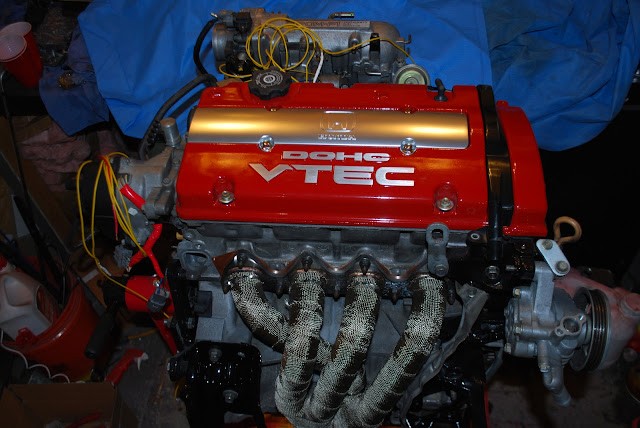Swapping an OBD2 H22 engine into a CB7 Accord presents unique challenges. This guide details a successful OBD2 H22 swap, focusing on key differences and solutions for a smooth integration. We’ll cover adapting the MAP sensor, distributor, and fuel injectors for optimal performance and reliability.
Key Differences Between OBD1 and OBD2 H22 Engines
While the H22 engine is a popular swap for the CB7 Accord, the OBD2 variant requires specific modifications for compatibility. The primary differences include:
- MAP Sensor Location: The OBD2 H22 features a MAP sensor mounted on the throttle body, while the OBD1 version has it remotely located.
- Distributor Wiring: The OBD2 distributor uses a single plug connector, whereas the OBD1 has two plugs.
- Fuel Injector Impedance: OBD1 injectors are low impedance, while OBD2 injectors are high impedance. This impacts how the ECU controls fuel delivery.
- VTEC Oil Pressure Switch: Some OBD2 JDM H22 engines lack the VTEC oil pressure switch found on OBD1 engines. This isn’t a critical component but might trigger a check engine light.
Adapting the OBD2 H22 for CB7 Integration
Addressing these key differences is crucial for a successful swap. Here’s how each component can be adapted:
MAP Sensor Solution
While the Accord’s MAP sensor can technically function with the OBD2 engine, utilizing the Prelude’s throttle body-mounted MAP sensor offers more accurate readings by eliminating potential vacuum leaks in the hose connecting a remote MAP sensor. This involves splicing and soldering wires according to wiring diagrams readily available online, specifically on forums like cb7tuner.com.
Distributor Modification
Although the internal components of OBD1 and OBD2 distributors are largely identical, the wiring differs. A successful approach involves re-wiring the OBD2 distributor connector to match the OBD1 configuration. This ensures proper signal transmission to the ECU. Confirming wire colors and destinations against a known-good OBD1 distributor is recommended.
Fuel Injector Considerations
Using the OBD2 injectors requires bypassing the resistor box in the Accord’s wiring harness. This is achieved by soldering together the five wires that enter the resistor box. This modification allows the high-impedance injectors to function correctly with the ECU’s high-impedance signal. While OBD2 injectors typically have a lower flow rate (290cc) compared to OBD1 injectors (345cc), this difference can be compensated for with tuning, especially with a programmable ECU like Hondata.
Conclusion
Successfully swapping an OBD2 H22 engine into a CB7 Accord involves understanding and addressing key differences in sensor location, wiring, and fuel injector impedance. By meticulously adapting these components, you can achieve a reliable and well-performing engine swap. Remember to consult detailed wiring diagrams and consider tuning options for optimal performance.


